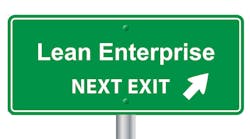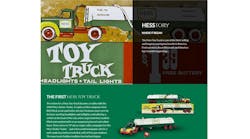In the last installment of "Lessons from the Road," we explored key aspects as you begin your lean journey. Now you are committing to the journey. But how? There are endless options for how to engage an organization, even though if you read most books that preceded our "Hitchhiker's Guide to Lean," you would think there was just one roadmap: Train people, do value stream maps, deploy 5S, and perform kaizen events.
There must be a better way.
1. Do not, do not, do not train everyone. I hear it all the time: "We have to train everyone in lean to begin." But what are they going to do with their training? Massive training feels like progress. It even gets people excited and interested. I saw this happen many years back at Ford Motor Co. They trained just about every last person in manufacturing. But no application followed.
Training must be connected to application. Some awareness can be useful, but that can be accomplished in one hour through communication. If you train everyone, they will have an expectation that there is a next step planned to engage them in lean. There likely isn't, and your journey is now beginning with an undertone of frustration.
Without building a strong foundation, our lean journey cannot stand for long.
2. Inch-deep/mile-wide or inch-wide/mile-deep. This is a phrase we've used for a long time to describe a critical choice in your lean strategy. Early in the journey, you do not have the capacity to invest across the entire width of the organization at a deep level. You need to make some choices. Most organizations choose, by default, the inch-deep/mile-wide strategy, meaning that they are going to take some aspect of lean and engage a large swath of the organization. This isn't a bad strategy, but isn't the only choice.
We often recommend the inch-wide/mile-deep strategy, what we also call a learning laboratory or learning line. The core benefit of this strategy is that while we are learning, we fail fast, fail small, and build competency and confidence before engaging the mile-wide. By lowering the risk, we take more chances, generating more learning. Learning is done through experimentation, which distinguishes "laboratory" from "pilot."
At the beginning of the Chrysler lean journey, I deployed one of our first learning labs. It was focused on 120 people (which was still too big) out of 5,000 at the site. The objective was twofold: prove to ourselves the business application, and prove to the employees the people benefit. Over eight months, we engaged those 120 people to implement over 900 ideas. We achieved the business result: Downtime per week went from 240 minutes to 4 minutes. And the people engagement was so high, not only did all the high seniority people bid to work in the area, but the union leader in the area went to his union hall and encouraged further investment in the Chrysler Operating System.
3. The primary purpose is learning. When building a foundation, our objective is to learn and build both capacity and capability. This is why we call this early stage building a foundation. While many recognize this fact, they don't operationalize the objective. This means we must define learning objectives for every kaizen event, learning lab, project or application. If we have a performance objective defined, such as reducing lead time by 50%, we plan against the objective, evaluate progress against the objective, and make adjustments towards the objective.
Unless we are just as explicit about our learning objectives, then learning is just a hopeful outcome. Define your learning objectives, then plan your application, and then plan and evaluate your execution against your learning objectives. Results still matter, but they are more the proof that we are learning well, not the prime focus of the application.
Unfortunately, it is pretty hard to skip steps towards lean maturity. Without building a strong foundation, our lean journey cannot stand for long.




